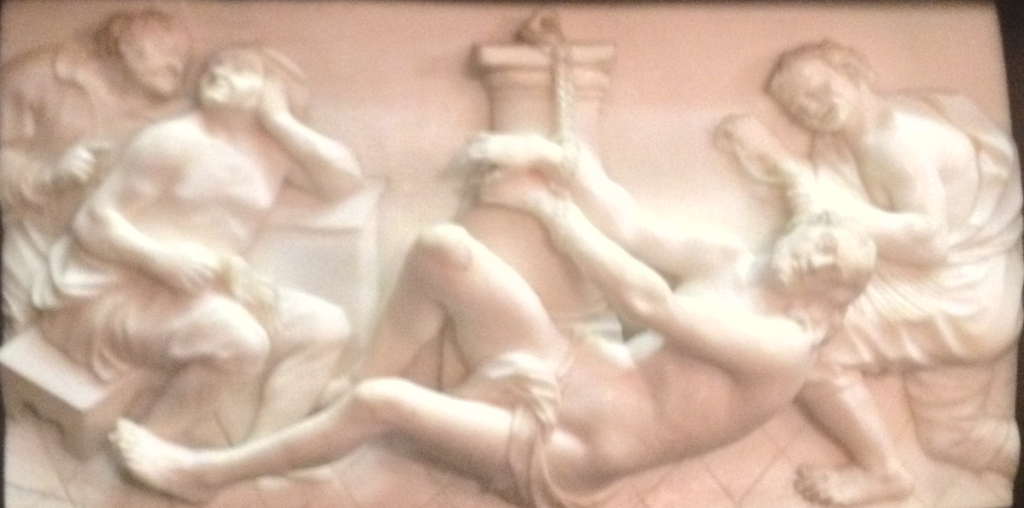This is a sequel to the post Happily whipping Jesus, which was about how some Medieval and later art presented the flagellation of Jesus as a sort of bdsm event, with sexually excited floggers and spectators. For the earlier post, go here.
Mary Magdalene, penitent
Anyway, I was in the Irish National Gallery in Dublin a while ago, staring at a piece of bdsm porn. It was painted towards the end of the of the 19th century. It showed a pretty blonde woman with her eyes turned up.
She’d ripped her own shift so she was bare above the waist, pointing a pair of very nice breasts at the painter, and the ladies and the gentlemen in the gallery where she hung. Unlike a lot of 19th century breasts, hers had nipples, lovingly detailed. She had a multi-thonged whip in her hand, and she’d paused after whipping herself. There were whip marks, red furrows against the plump, creamy white skin of her shoulders.
She had the soulful expression of a submissive who’s just been soundly punished. She looked thoughtful, grateful and satisfied.
I wasn’t expecting her. She was sexy, and she’d been painted by someone who knew what whip-marks looked like, but more importantly, had seen the facial expressions of someone who’d been whipped, who thought they deserved it, but also found it brought them close to orgasm. She was porn, with the impact of a punch in the solar plexus.
She was Mary Magdalene, the frame said, the companion of Jesus.
I couldn’t take a photo, and I can’t find a reproduction on the net. But there are plenty of similar images, though that’s the most overtly sexual one I’ve seen.
Christian art has always included a lot of bdsm imagery. If an artist wanted to paint a naked woman in bondage, for example, he or she used to paint Angelica from Ariosto’s Orlando Furioso, chained naked to a rock. It’s the same image, of course, as Andromeda chained naked to a rock, but by using the Ariosto story you make it a Christian rather than a pagan scenario.
But if you want to paint a naked woman in pain, or in sexual ecstasy, then you painted Mary Magdalene. That’s because Magdalene was imagined as a prostitute in a lot of Christian art. After the death of Jesus, she supposedly spend the rest of her life repenting, including by scourging herself.
 So if you want to paint a naked woman, especially one in submissive pose, then Magdalene was your subject. Your painting could be as sexy as you could make it, while apparently being a holy religious work. Here’s one by Jules Joseph Lefebvre (1876), of her repenting, beautifully, outside a cave in France.
So if you want to paint a naked woman, especially one in submissive pose, then Magdalene was your subject. Your painting could be as sexy as you could make it, while apparently being a holy religious work. Here’s one by Jules Joseph Lefebvre (1876), of her repenting, beautifully, outside a cave in France.
But if you want to go a little further into bdsm, Magdalene will still oblige you.
 Here she is in a 19th century painting by Francisco Masnera y Manovens. She’s stretched out naked on the floor, looking up at someone who isn’t in the picture, seeking whatever will bring her forgiveness. The cross digs into her bare breast.
Here she is in a 19th century painting by Francisco Masnera y Manovens. She’s stretched out naked on the floor, looking up at someone who isn’t in the picture, seeking whatever will bring her forgiveness. The cross digs into her bare breast.
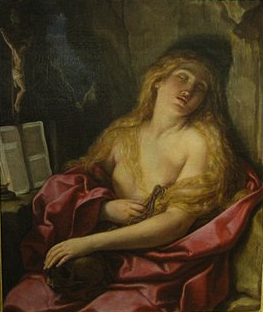 This 18th century painting (I don’t know the artist) shows her with her whip pressed against her right breast. There aren’t any whip marks painted on Magdalena’s shoulders, but you can tell from the ecstatic, satisfied expression and her blissed-out eyes that the whipping is over.
This 18th century painting (I don’t know the artist) shows her with her whip pressed against her right breast. There aren’t any whip marks painted on Magdalena’s shoulders, but you can tell from the ecstatic, satisfied expression and her blissed-out eyes that the whipping is over.
By the way, it’s common in paintings of the Penitent Magdalene to have the whip merge with her hair. In some paintings (eg Tintorreto’s) the whip isn’t actually painted, but she holds a swatch of her hair, touching her breast and going over her shoulder as a stand-in for the whip.
My favourite, though, is the sculpture of Magdalene by Canova. She kneels submissively, with her eyes cast down, and she is holding out a cross (made of bronze, and detachable; many photos are taken without it). The cross is narrower and rounder than a real crucifix would be: it’s a rod. She has a rope round her waist, to hurt her skin, which was also used in auto-flagellation.
The front view, with the cross:
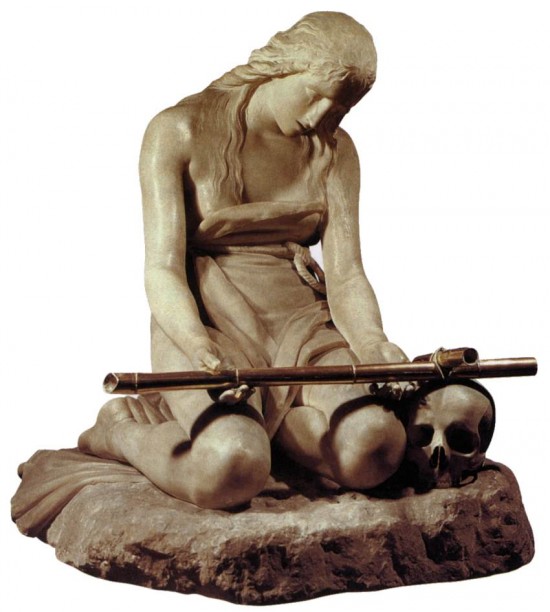
But it’s clearer, in some ways, if you detach the cross, and have her just holding out her hands.
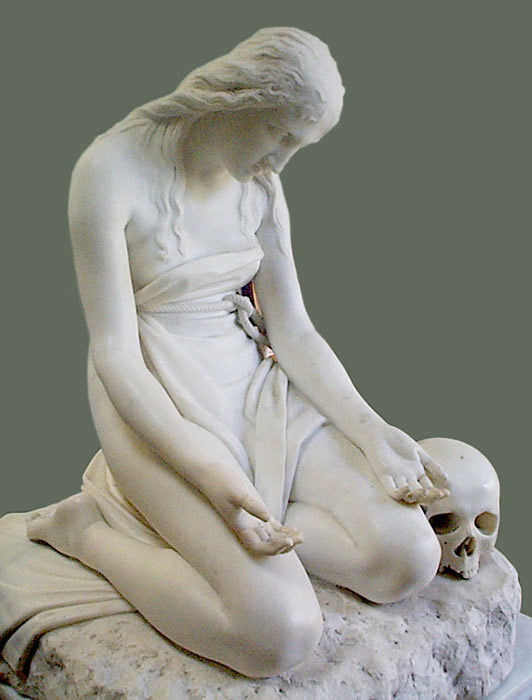
The rear view: 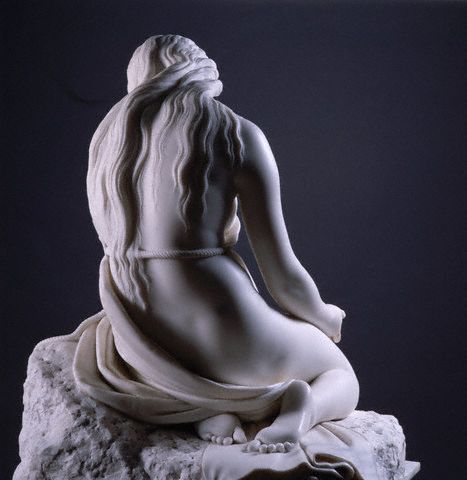 It’s a sexual image, it’s an image of submission, and it’s very beautiful.
It’s a sexual image, it’s an image of submission, and it’s very beautiful.








